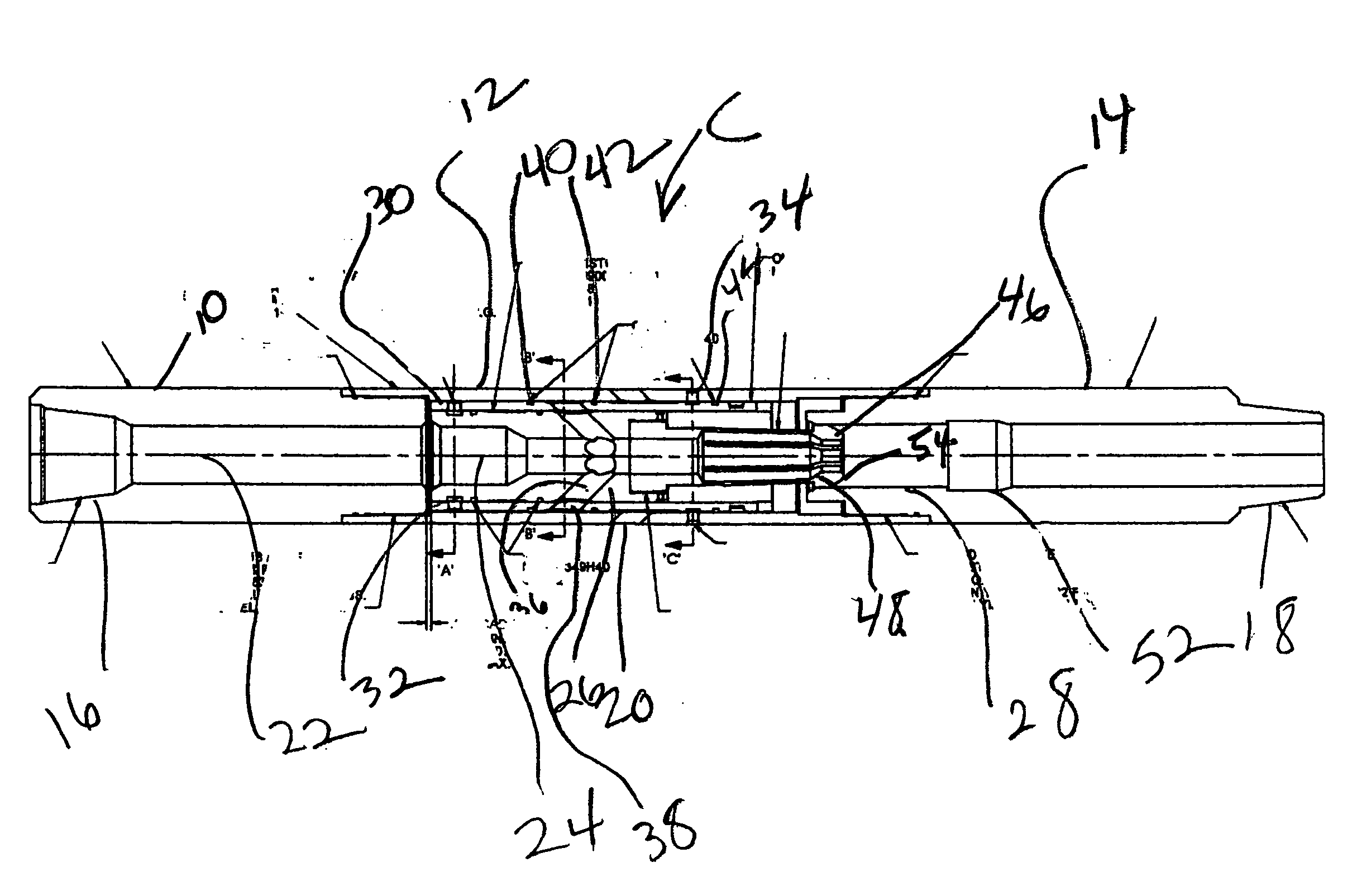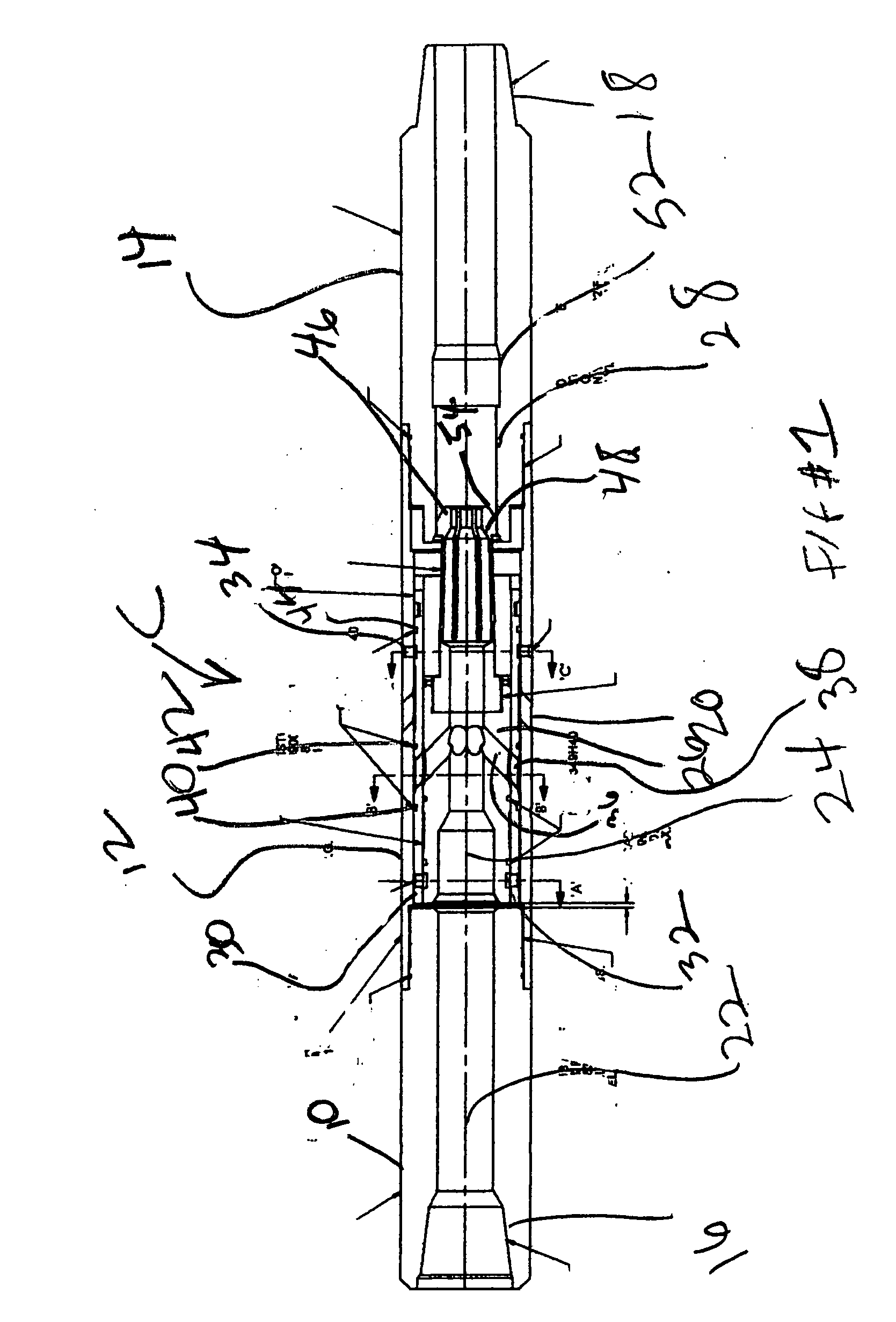Single cycle dart operated circulation sub
a single-cycle dart and circulation sub technology, applied in the direction of fluid removal, wellbore/well accessories, sealing/packing, etc., can solve the problems of easy eroded balls, difficult to know, and less suitable valves for deviating wellbores
- Summary
- Abstract
- Description
- Claims
- Application Information
AI Technical Summary
Benefits of technology
Problems solved by technology
Method used
Image
Examples
Embodiment Construction
[0017]FIG. 1 illustrates the circulation sub C of the present invention in the run in position. It has a top sub 10 attached to a ported sub 12 which is in turn attached to a bottom sub 14. Thread 16 connects to the string above (not shown). Located above circulation sub C can be other subs that operate just like it but with larger diameter darts.
[0018]Thread 18 is used to secure a lower string which can include a packer and dart catchers as will be described below. Ported sub 12 has a port 20. A through passage in circulation sub C comprises an upper passage 22 in top sub 10. Passage 24 in inner piston 26 is the continuation of passage 22. Finally, passage 28 in bottom sub 14 marks the lower end of the through bore in the circulation sub C.
[0019]Outer piston 30 is concentric with inner piston 26 and they are held together by one or more shear pins 32. Outer piston 30 is also held to ported sub 12 by one or more shear pins 34 that are preferably weaker than pins 32. In the run in po...
PUM
 Login to View More
Login to View More Abstract
Description
Claims
Application Information
 Login to View More
Login to View More - R&D
- Intellectual Property
- Life Sciences
- Materials
- Tech Scout
- Unparalleled Data Quality
- Higher Quality Content
- 60% Fewer Hallucinations
Browse by: Latest US Patents, China's latest patents, Technical Efficacy Thesaurus, Application Domain, Technology Topic, Popular Technical Reports.
© 2025 PatSnap. All rights reserved.Legal|Privacy policy|Modern Slavery Act Transparency Statement|Sitemap|About US| Contact US: help@patsnap.com



